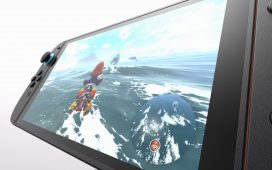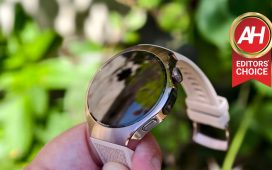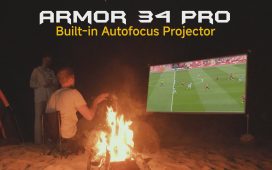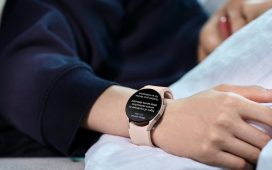The Roborock Saros Z70 is the company’s best robot vacuum to date, but only in a vacuum (pun intended). It cleans as well as anything we’ve seen, navigates very well, and its object detection is second to none. But it also costs $1,000 more than the Saros 10R, which already does all of that to the same standard, and the innovative-yet-deeply-flawed OmniGrip robot arm doesn’t offer anywhere near enough value to cover the huge price hike.
Now that I finally have the Roborock Saros Z70 in-house for testing, I can finally say, with authority, that the first commercially available robot vacuum cleaner with a robot arm is super cool… but I don’t think cool is enough.
It’s been several months since I first got to see the Saros Z70 on display as one of the obvious highlights of CES 2025, and it’s lost none of that initial wow factor. At first, it looks like any other high-end Roborock robot vacuum, but then the top panel retracts, the robotic arm pops out, and it gets to work picking up your mess. But is that the only trick up its sleeve, and is it really worth the eye-melting $2,600 asking price?
Editor’s note: Roborock kindly sent over two test units, one to me, and one to my colleague Oliver Cragg. We’ve both been using the units in our respective homes over the past few weeks to really give this expensive bot the gruelling testing it deserves. This review contains our combined thoughts on the Saros Z70 and its innovative new tech.
It’s a robot vacuum…
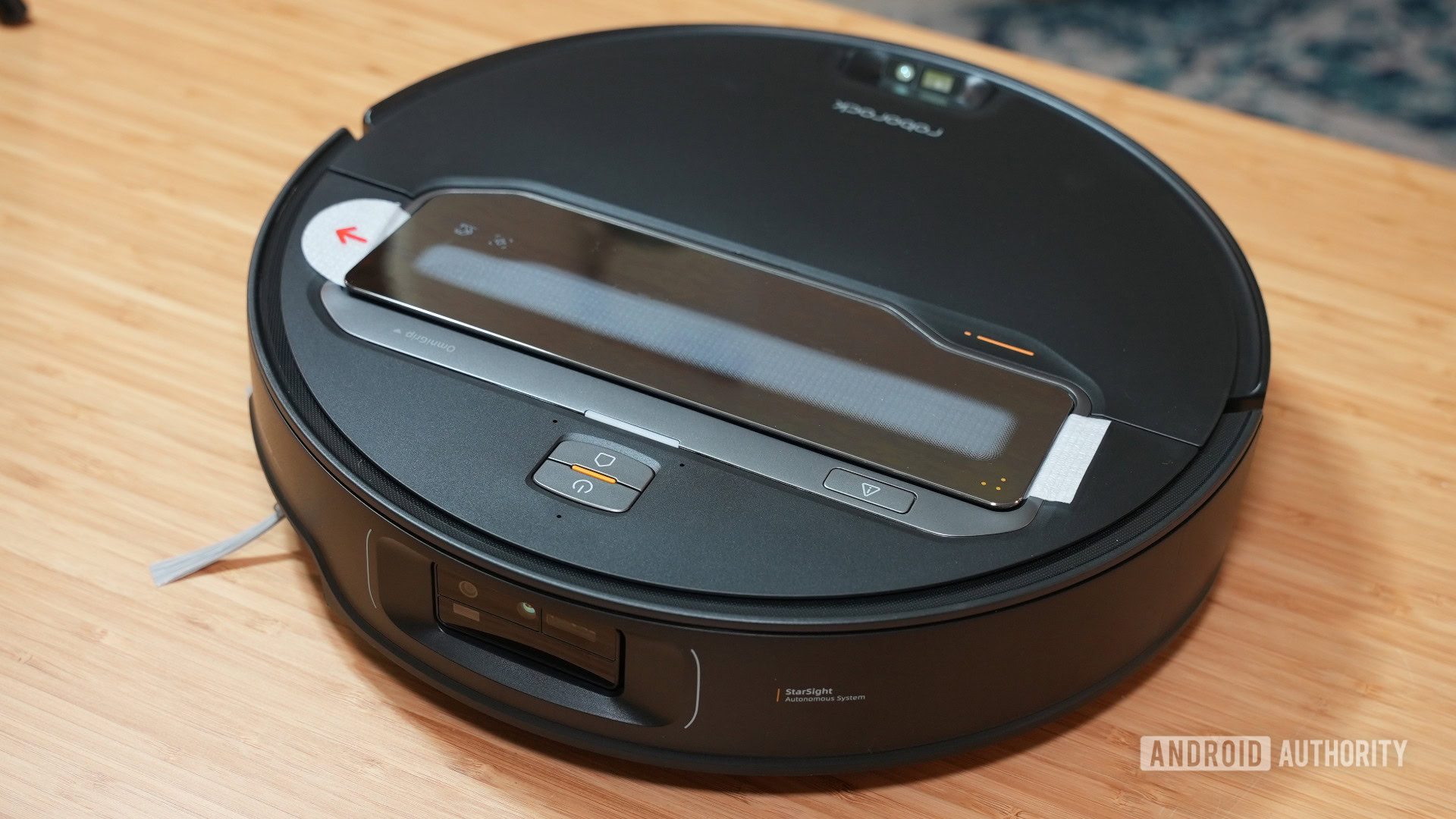
Jonathan Feist / Android Authority
As much as I want to talk about it, let’s get the regular functionality out of the way first. Here’s the bottom line: the Roborock Saros Z70 is the best robot vacuum that Roborock has released to date* (I’ll get back to that asterisk, Thunderbolts* style).
As a robot vacuum and mop machine, the Saros Z70 is reliable, efficient, and does a great job cleaning hard floors, carpets, and rugs. At just 3.14-inches tall, the Saros Z70 is one of the slimmer bots around, making it ideal for cleaning under low furniture.
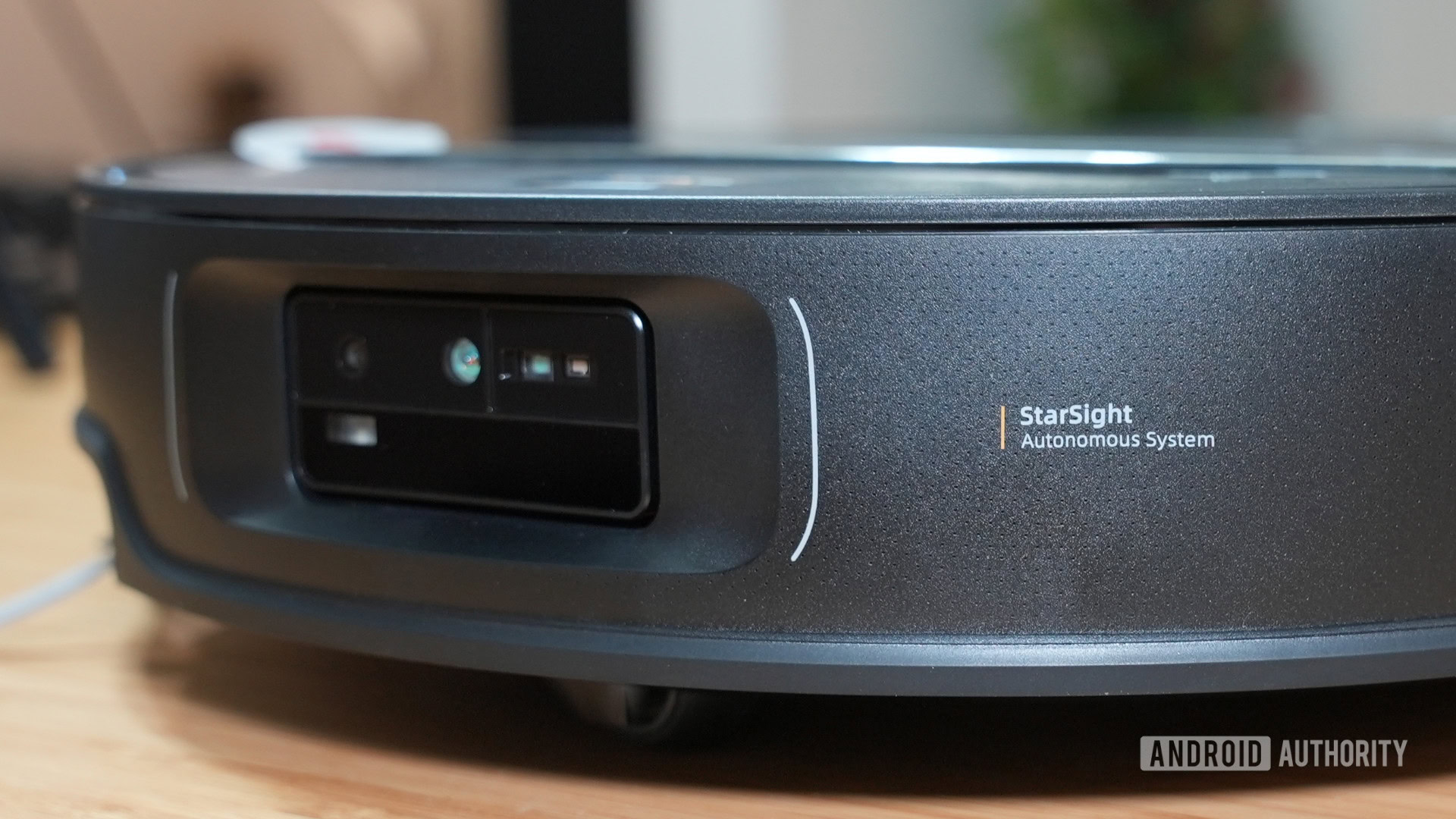
Jonathan Feist / Android Authority
That flexibility is improved by the lack of a LiDAR navigation turret that typically sticks out the top of robot vacs, as instead the Saros Z70 relies on its front and rear StarSight Autonomous System 2.0 navigation cameras for mapping, navigation, and obstacle avoidance. This system is built from RGB, 3D ToF, and infrared sensors and is backed by AI-driven object detection. This, combined with the side-mounted VertiBeam Lateral Obstacle Avoidance detection (translation: it looks up and down to avoid impacts under furniture), makes for extremely safe and reliable navigation, whether it’s a rogue child’s toy, a stray charging cable, or something much larger.
Speaking of height, not only can the Saros Z70 lift and lower its brushes, mops, and rollers, but it can lift the entire chassis as well, allowing it to mount high thresholds easily (up to 1.57-inch), and more effectively clean specific surfaces such as thick carpets or rugs.
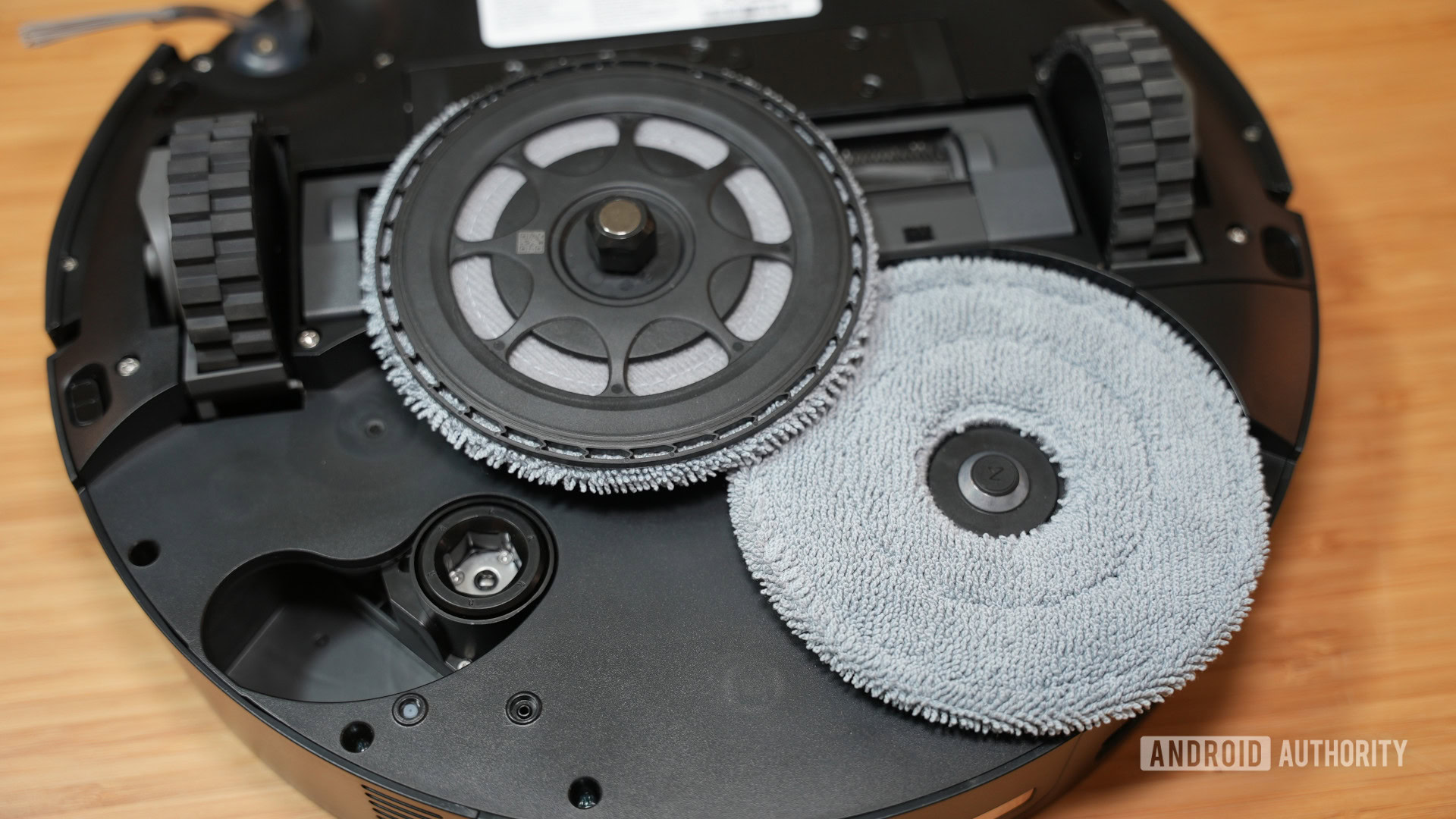
Jonathan Feist / Android Authority
For mopping, the Z70 is also equipped with dual circular mop pads, as opposed to the VibraRise single mop of the Saros 10. I prefer the dual pad models from Roborock, as they get fewer tangles and leave a nicer sheen. The FlexiArm system also means the right mop pad will kick out to the side when skirting the edges of a room, so you get a nice clean right up to the edge. This same tech powers the front brush, which flicks dirt into the path of the main vacuum rollers.
The bot can also detach the mop heads and leave them in the base station when it knows it’s going on a vacuum-only mission. During those excursions, it benefits from up to 22,000Pa of suction pressure; more than enough to collect nearly any dry debris from your deepest carpets.
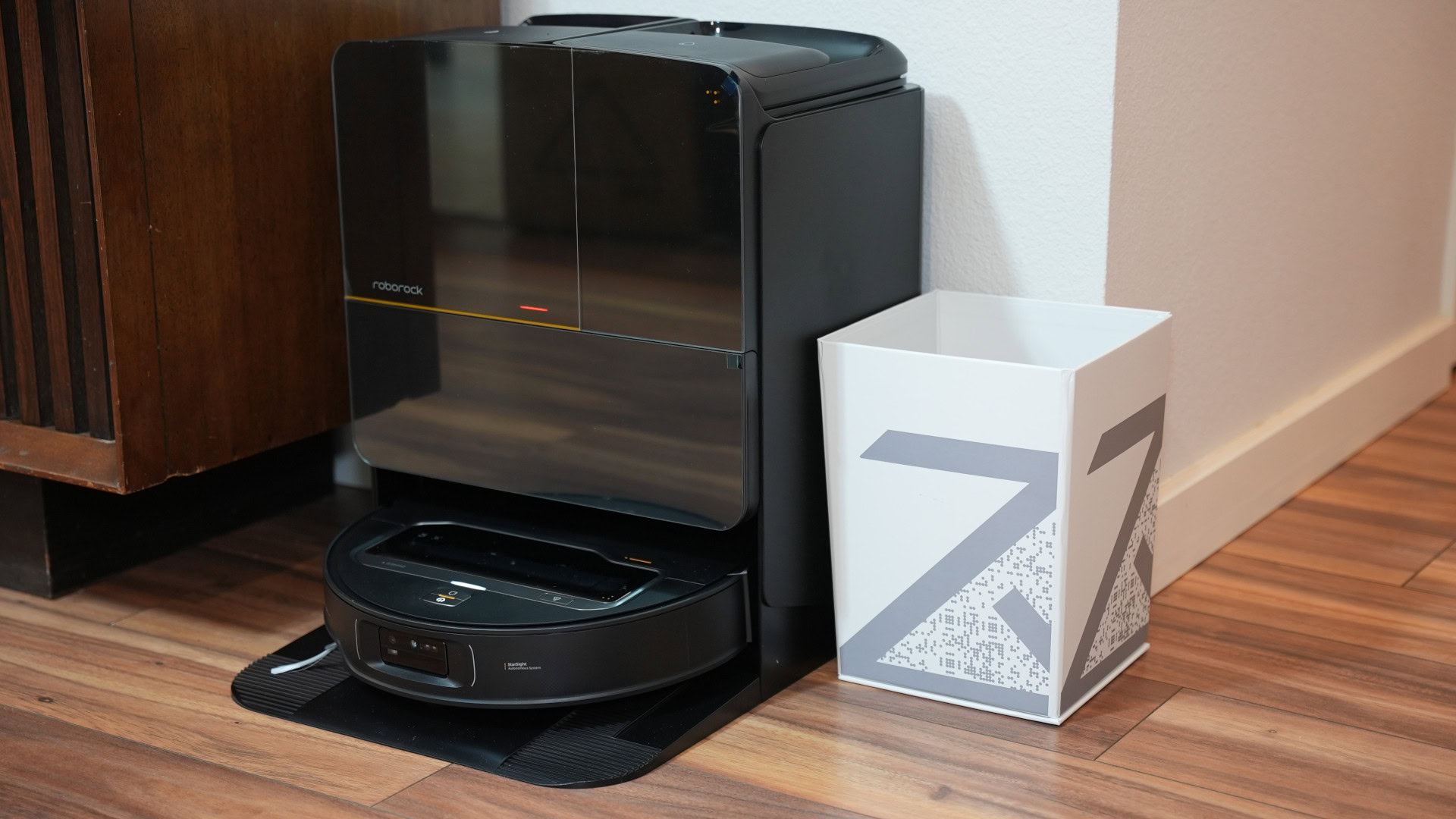
Jonathan Feist / Android Authority
And before we get to the main event, a shoutout to the Multifunctional Dock 4.0. You know, the base station. Equipped with large water canisters, an automatically dispensing detergent canister (cleaning solution not supplied, but I recommend getting it as it eliminates streaky floors), and a large vacuum bag, the base station houses, cleans, and charges the Saros Z70. It includes heated mop washing up to an impressive 80 degrees Celsius, heated air drying, and it holds the mop heads when they have been removed for vacuum-only runs.
As I said, this is the best robot vacuum cleaner Roborock has ever made, which means it’s already a strong contender for the best robot vacuum cleaner you can buy. But here’s the catch: it’s identical to the Roborock Saros 10R.
This is the best robot vacuum cleaner Roborock has ever made, but that claim comes with a huge caveat.
Everything I’ve said and praised about this bot, and everything I said in my top marks Saros 10R review, applies here (the Z70 reportedly has slightly smaller onboard dirt and water storage, but I didn’t notice much difference). But that robot vac is $1,599.99, at the time of writing, subject to tariff issues. Meanwhile, the Saros Z70 is a whole $1,000 more expensive, and for that spare change, you could buy a very good second robot vacuum cleaner, a new flagship phone, or a base model MacBook Air M4.
So, let’s talk about the one thing that is different…
…with a robotic arm!
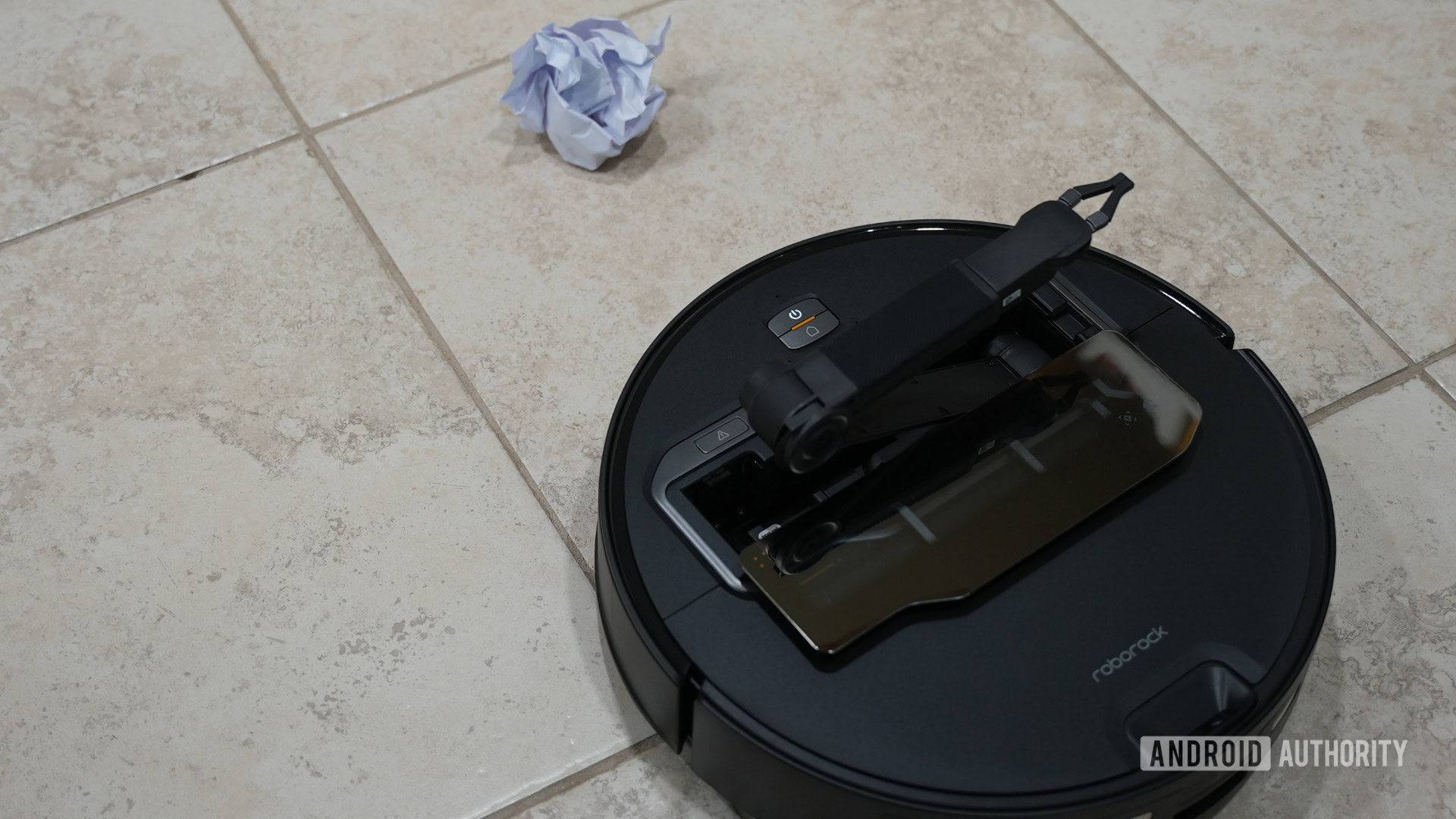
Jonathan Feist / Android Authority
While we’ve started to see concept bots with mechanical appendages appear in its wake, Roborock’s Saros Z70 is the first robot vacuum to hit the US market that packs a robotic arm.
Let’s go over how it works first. For the unfamiliar, the fancily named OmniGrip is a 5-axis mechanical arm that can grasp a selected number of small items. There are two tilting joints on the arm, similar to a tractor arm. This allows the arm to extend and bend to nearly any angle and position. The entire arm can spin, but generally operates facing straight ahead. Next, the head of the arm has two symmetrical pincers, this is the clamp for items. Finally, the head can rotate, allowing you to clamp things from multiple angles to get the best grasp.
Roborock’s Saros Z70 is the first robot vacuum to hit the US market that packs a robotic arm.
Object recognition and pickup can be handled autonomously by the bot itself via its front-facing camera and a small camera underneath the arm’s pincers, but you can also manually drive the bot and control the arm with touchscreen controls in the Roborock app. You can even view the robot’s surroundings remotely through these cameras as a kind of roaming, articulating smart home security camera, if you so desire. Regardless of how you use it, the arm rests inside the Saros Z70’s main body when not in use and is covered by a retracting flap.
Roborock has also thought through safety measures, as there’s an emergency stop button on the top of the robot, a child lock function, and you can fully disable the entire arm in the app.
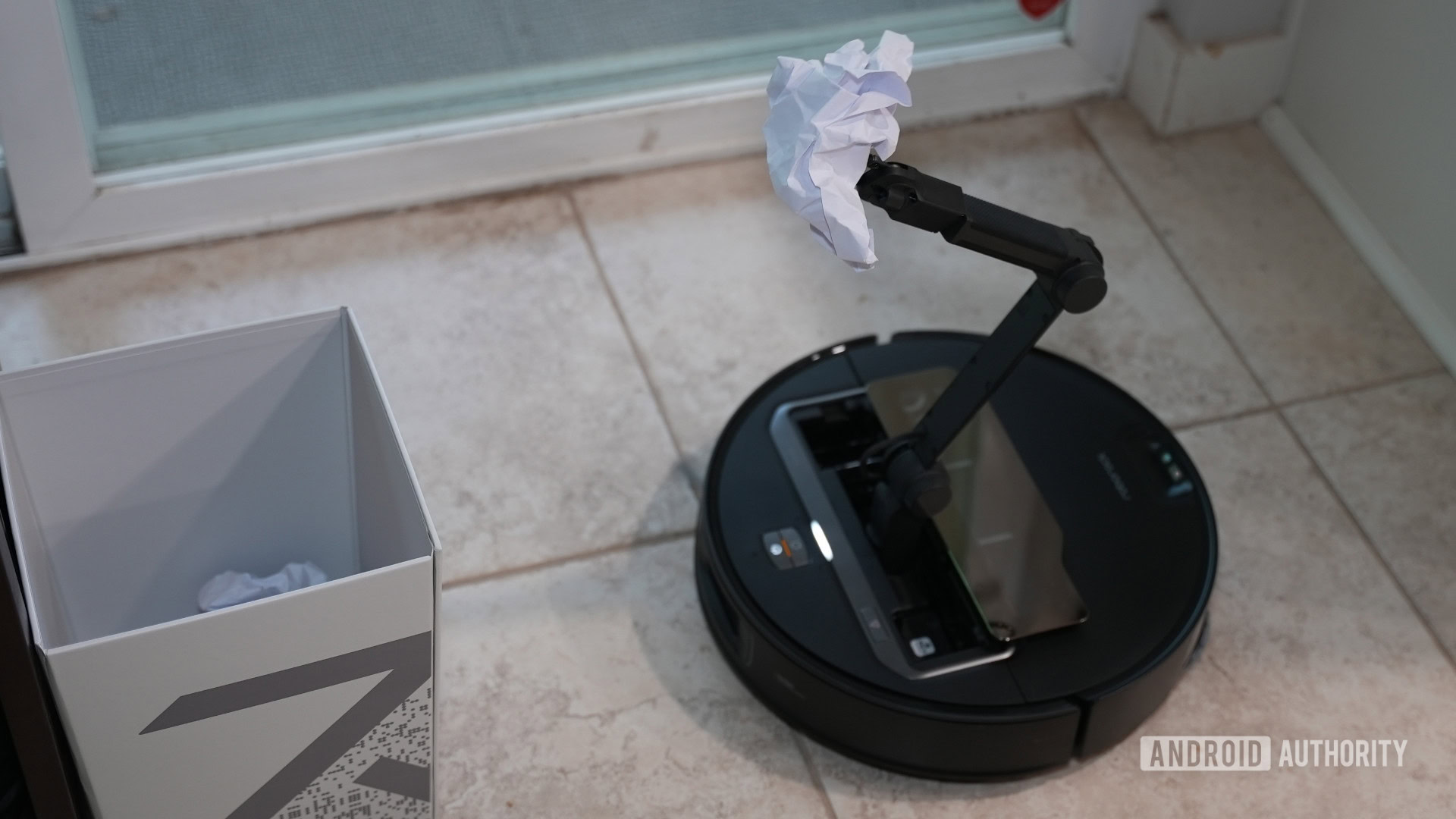
Jonathan Feist / Android Authority
Picking up items would be useless on its own; where they are placed back down is what matters. As part of the robot arm strategy, the app now reports detected objects in your space and will highlight them on the in-app map. The app also lets you specify two zones: one for footwear storage and a container for other loose objects. Using AI and its cameras, the bot can detect items such as socks, cloths, paper balls, and some footwear, and categorize them as either clothing or trash. Roborock includes a trash bin accessory that uses a QR code identification, and can be the drop spot for discarded items, or you can set your own.
So in theory, with this setup all arranged, the robot can perform a number of functions in combination with the arm:
- Follow-up cleaning — The robot will move items it recognizes autonomously and lift them to clean underneath.
- Automatic sorting — The robot will autonomously move footwear to the storage zone and deposit trash/other lighter items into the container.
- Manual sorting — The Roborock app will show the location of recognized objects, at which point you can manually tell the robot to go pick them up as above.
- Remote control — You can manually control the arm to pick up items.
The inclusion of the robotic arm is undeniably cool, and it’ll absolutely wow anyone you show it to. As the robot vacuum industry produced better and better obstacle avoidance, less and less of our floors were being cleaned, so a method of moving those objects was the next logical step. But that’s the real question: does the OmniGrip arm help the Saros Z70 actually do what it’s supposed to do — clean your floors — to the tune of a $1,000 price hike? The short answer is no, and there are a few big reasons why, some of which are fundamental, likely unsolvable issues, and others that are entirely the fault of this being a first-generation product.
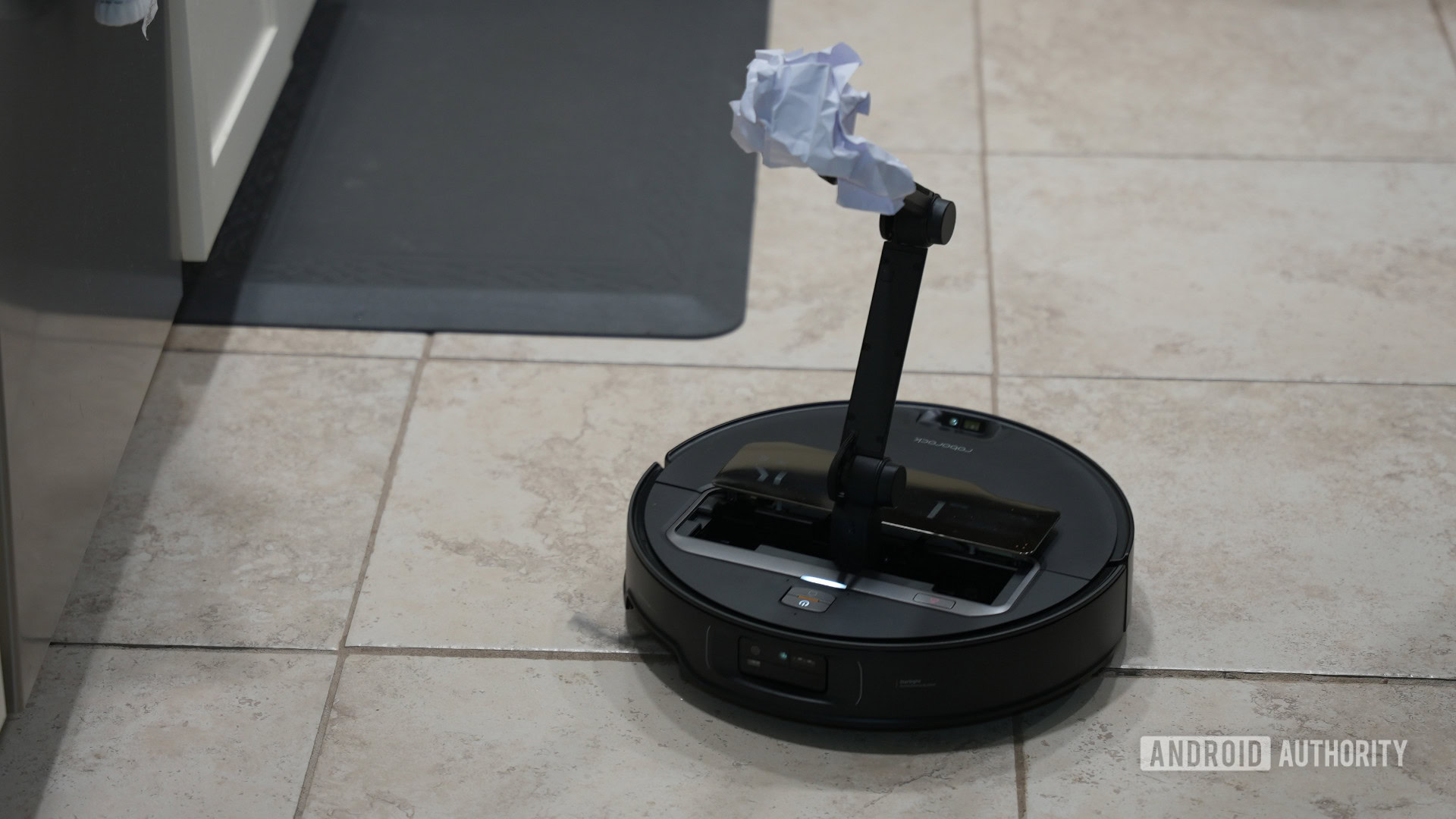
Jonathan Feist / Android Authority
One big limitation is the weight of objects that the Saros Z70 can lift, as it caps at a maximum of 300g. This is absolutely fine for light items like socks and paper, but shoes — one of the main obstacles of any household — are extremely hit-and-miss. In fairness to Roborock, it only emphasizes sandals, which typically do weigh under the limit, but that puts a low bar on what the bot can pick up.
In my testing, the robot arm was actually able to lift a shoe that weighed more than 300g. Because of the weight, however, the bot chose to drive very slowly, would not navigate a threshold, and eventually put the shoe back on the floor, unable to do much else with it. However, despite being officially supported, sandals are the same story, so this isn’t a weight issue. I’ve only ever seen the bot pick up the same sandal, do a circle, and put it back down — not once has it taken a sandal or any other footwear to the designated drop-off location.
It’s the same story for non-footwear. I’ve seen the arm move objects temporarily to clean the floor, but I’ve never actually seen the bot move a piece of crumpled paper or a sock into the companion container on its own. I’ve seen it get very close a few times, but it’ll always end up putting the item beside the box, not in it. Cleaning the floor is my top priority, so at least I’m getting a better clean, but tidying is a complete non-starter.
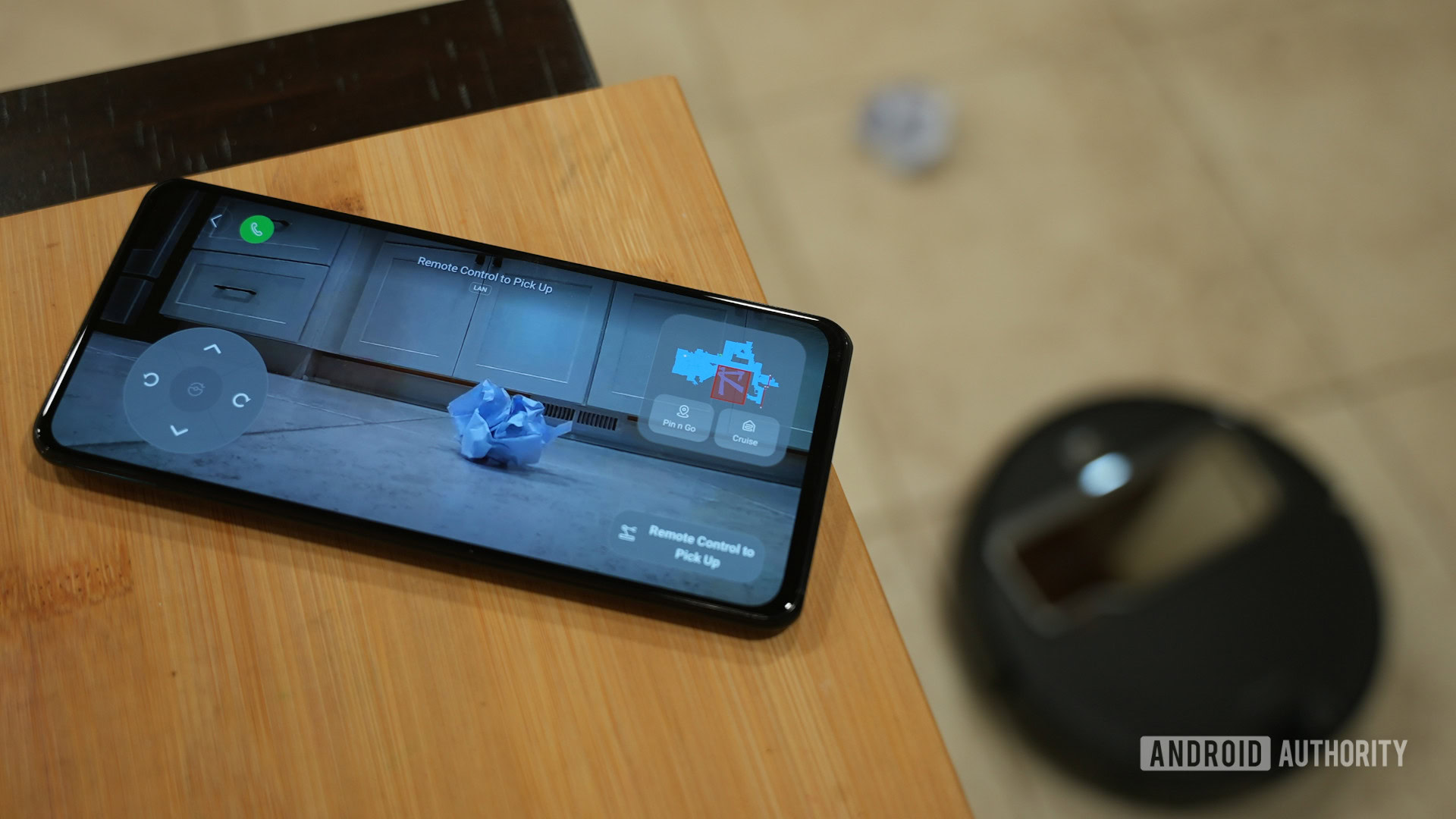
Jonathan Feist / Android Authority
Another minor issue is that the bot stores objects’ location for future cleaning, rather than doing it on its usual cleaning run. I want the bot to immediately identify objects and move them out of the way immediately, not on a future run. I’ve successfully forced the Saros Z70 to clear a number of objects, but a lot of these instances were because I put obstacles in the way for testing purposes, rather than it genuinely helping to tidy my space on its own. I have limited space; I can’t afford to leave junk on the floor while I wait for it to do its job properly.
Roborock has promised that further updates are due to improve performance for the OminGrip, and that further objects will be added to the recognition system. Hopefully, the lack of polish that inevitably comes with any first-gen tech will be resolved in time, but that’s nowhere near guaranteed, and you shouldn’t buy a product now based on a promise that it’ll be better in the future, especially not at this price.
Roborock Saros Z70 review verdict: Is it worth $2,700?
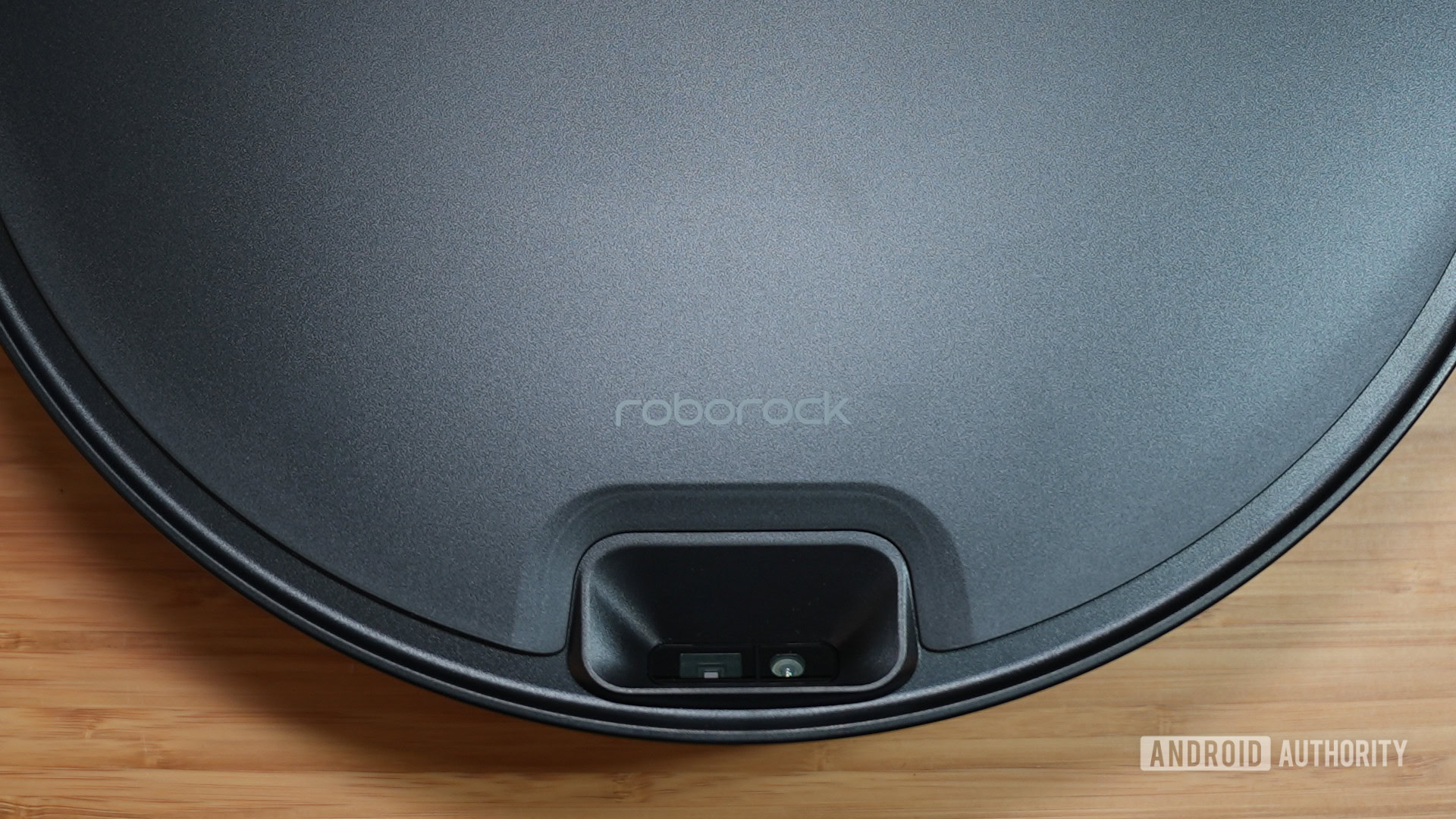
Jonathan Feist / Android Authority
The Saros Z70 is a fantastic robot vacuum and Roborock’s best to date *however, the only difference between it and the $1,000 cheaper Saros 10R is the robotic arm that, well… doesn’t really work right now.
Since I first set the Saros Z70 loose in my home, it has undergone many firmware updates, and has already vastly improved its capabilities, but it still can’t do most of the tasks Roborock says it can do. I know it can do a lot more, and I’m hopeful it will with future software updates, but as it operates today, it is too rich for my wallet, and I imagine that’ll be the case for the vast majority of buyers.
The Roborock Saros Z70 has the best party trick of any robot vacuum, but its innovative robot arm isn’t worth the price of admission until it improves.
The Roborock Saros Z70 is fun, has been a literal party trick I’ve enjoyed showing guests, and I’ll give praise to Roborock for both being first and attempting something innovative in public rather than behind closed R&D doors. But that doesn’t mean you should buy it unless you’ve got money to burn and don’t mind being a guinea pig for early adopter tech.

Roborock Saros Z70
Robotic arm! • Next-gen navigation • AI-powered object detection • Big battery
MSRP: $2,599.00
It’ll tidy your space before cleaning it
Equipped with a robotic arm, the Roborock Saros Z70 is a next-gen robot vacuum with AI-powered navigation and obstacle avoidance, much larger battery, and the ability to put toys in the toy box, socks in the hamper, and trash in the bin.
Positives
- Impressive navigation
- Robust object detection
- Cleans really well
- Innovative robotic arm
Cons
- Huge limitations on robot arm functionality
- Massive price tag

